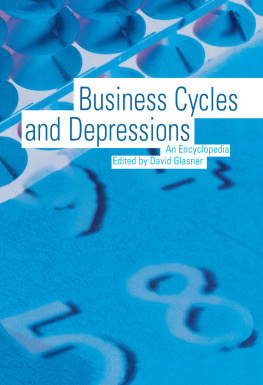CHILDREN OF POVERTY
STUDIES ON THE EFFECTS OF SINGLE PARENTHOOD, THE FEMINIZATION OF POVERTY, AND HOMELESSNESS
edited by
STUART BRUCHEY
UNIVERSITY OF MAINE
NOT JUST A SHELTER KID
HOW HOMELESS CHILDREN FIND SOLACE
__________
MELANIE SMITH PERCY
First published 1997 Copyright 1997 Melanie Smith Percy
All rights reserved
First published by Garland Publishing, Inc.
This edition published 2012 by Routledge
| Routledge | Routledge |
| Taylor & Francis Group | Taylor & Francis Group |
| 711 Third Avenue | 2 Park Square, Milton Park |
| New York, NY 10017 | Abingdon, Oxon OX 14 4RN |
Library of Congress Cataloging-in-Publication Data
Percy, Melanie Smith, 1955
Not just a shelter kid : how homeless children find solace / Melanie Smith Percy.
p. cm. (Children of poverty)
Includes bibliographical references and index.
ISBN 0-8153-2618-1 (alk. paper)
1. Homeless childrenUnited StatesAttitudes. 2. Homeless ChildrenUnited StatesPsychology. 3. Shelters for the homelessUnited States. I. Title. II. Series.
HV4505.P47 1997
Contents
My deepest thanks to Dr. Pamela N. Clarke for her patient determination, encouragement and insistence that my doctoral studies and dissertation research were sustained at the highest level of intellectual ability. Also, for her considerable commitment of time and energy to this project I am indebted to my committee members Drs. Carol E. Davis, Sandra B. Frick-Helms, and Julie Neureur for their enthusiastic insights, critical reflection and their unfailing support throughout this process, specifically to Dr. Neureur for her inspirational teaching, to Dr. Davis for her expertise in qualitative data analysis and for always being there, and to Dr. Frick-Helms for sharing herself, her understanding and her love of children.
I would like to thank the child-participants who so willingly and enthusiastically shared their work, their ideas and themselves.
I am grateful to my colleague and close friend, Judy Corfman, RN, FNP for her seemingly inexhaustible encouragement and support at exactly the right moments, including the best ever chocolate chip cookies. Also, to Cheryl Prickett, RN, PNP for assistance in analyzing the data and her boundless enthusiasm for this project. This book would not be complete without adding my sincere thanks and gratitude to Sue Walker and Elena Mota for their very patient and painstaking retyping of this manuscript
I would like to thank the faculty of the School of Nursing, University of South Carolina for the freedom to create and explore new paths throughout the doctoral program.
Finally, I will be forever indebted to my husband Tomm for his strength, loving understanding, and sustaining belief that I would complete this project. Also, for insisting that I learn to use the computer and for providing computer support without complaint at three a.m., or whenever I needed him. I would like to thank our three children (Ian, Laura and Kayla) for generously giving up time with their mother so she could fulfill her dream. Watching them grow, listening to their ideas and re-experiencing childhood through their eyes has fueled my interest and understanding of what is special to children.
This book is about children, and their perspectives. These children were homeless at the time of these interviews. However, their questions, thoughts, and feelings are not unique to homeless children. The many issues of childhood remain the same regardless of where the child lives. The ideas expressed in these pages are some of the universal themes of growing up and becoming an adult. Their search for identity, the desire to care for someone and have them care for you, trust, stability in an ever-changing world. All of these themes were present in the children's interviews and photographs.
The children were intensely involved in this project. They were very serious about their assignment from the time they spent with the camera, throughout the interviews. Their thoughts are presented here in the hopes that the reader will take away a more complete understanding of what it means to be a child living in a shelter.
Melanie S. Percy
Austin, Texas
Not Just a Shelter Kid
Over 2.2 million people are homeless in the United States, more than at any time since the Great Depression.
Increasing poverty, coupled with a lack of affordable housing, has driven many families into the streets. Between 1981 and 1985, the number of American families living in poverty increased by more than 40%. The decision to reduce government funding for the most vulnerable populations has led to the current epidemic of homelessness in the United States.
Homeless children face tremendous challenges. Bassuk and Rubin found severe anxiety and depression among homeless children in Massachusetts.
Obtaining access to government programs may be problematic when a family is residing in a shelter. Establishing eligibility for government programs is difficult when families do not have a permanent address. Homeless shelters do not generally allow their occupants to use the shelter's address on applications. In some shelters, there is no refrigeration so mothers cannot use the free milk given to them by the Women, Infant, Children (WIC) food supplement program.
Daily routines, which are commonplace for most American children, present difficulties for homeless children. Homelessness does not always mean unemployment for parents, yet parents are often forced to choose between keeping their job or escorting their children through unsafe neighborhoods to unfamiliar schools. Caring for preschool children is problematic for homeless parents, especially when shelter regulations require them to search daily for permanent housing. Few shelters have play space for children, and many are in neighborhoods where there is no room for outside play.
Depression, anxiety and learning difficulties are common among these school-age children, poor school attendance and truancy are also problems. The National Committee for the Homeless estimates that 57% of homeless school-age children do not regularly attend school.
The majority of the studies on homeless families have focused on family dysfunction or the stress and problems encountered in homelessness. While necessary, the problem-focused approach of these research studies provides a very narrow, limited understanding of the experience of homelessness for children. There is a danger inherent in identifying problems within this population without also identifying strengths. The love and loyalty seen within many homeless families is nothing short of heroic.
Goodman, Saxe, and Harvey characterize homelessness as psychological trauma.
Current literature suggests that shelter life is traumatic for children. Investigators have primarily used psychometric measures to examine depression, anxiety, and developmental delays in children residing in public shelters. No studies have examined the impact of family bonds, hope, or the meaning of life for these children. In order to fully understand the experience of being homeless, it is necessary to obtain a more complete picture of the lives of children residing in shelters.







